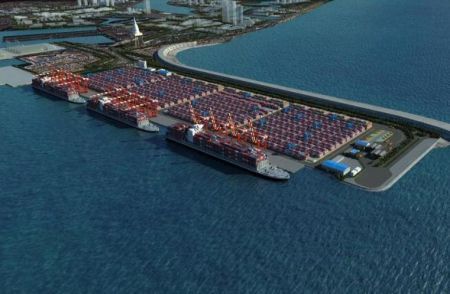
The island’s location, big port construction projects and plans to expand its hub role, makes it well-placed to emerge as a new maritime centre like Singapore and Dubai, said Noboru Ueda, chairman and president of ClassNK.
The Tokyo-based ship classification society Nippon Kaiji Kyokai, better known as ClassNK, is the world’s largest such organisation which maintains technical standards for building and operating ships, having surged past the 200 million gross tonne mark in May 2012.
A new shift in the maritime industry is taking place, from north to south, with Sri Lanka emerging as a maritime hub after the rise of Singapore and Dubai, creating a southern maritime zone, Ueda said.
“If Sri Lanka succeeds as a new maritime nation, then with Dubai and Singapore, we will have three new maritime stars in the region,” Oeda told a ports and logistics conference in Colombo hosted by Sri Lanka Ports Authority and organized by Seatrade, an events company specializing in the maritime sector.
“In doing so, Sri Lanka will help give shape to a new Indian Ocean-centred maritime industry, finally linking the traditional ship owning heart of Europe, and the shipping and ship building hubs of East Asia, with the growing economies of the Indian subcontinent.”
Ship building, once dominated by Europe, moved from west to east with the rise of ship yards first in Japan, then South Korean and now China, starting from the 1980s.
Ship ownership, which too was traditionally dominated by European nations like Greece and Germany, has also moved east in the past decade with Japan today the world’s largest ship owning nation, Oeda said.
However, both are still in the same range of latitudes – a line from west to east – making it still a very geographically northern industry.
“This relationship is now beginning to change,” Oeda said. “We’re now witnessing the beginning of a new shift in the industry; this time from north to south.”
The start of this shift coincides with the rise of Singapore as a maritime nation and the emergence of the Middle East, particularly the rise of Dubai as a maritime hub.
“Dubai has emerged alongside Singapore as a new hub for vessel operations,” he said.
Oeda said one can now draw a new east-west line linking Dubai and the Middle East with Singapore, showing the industry shifting from north to south.
“In this new southern maritime zone, we can see all of the emerging maritime nations. In the east, we have not only Singapore but all of the growing nations of south east Asia.
“In the west ,we have not only Dubai and the Middle East, but also Oman, Bahrain, Qatar, Saudi Arabia and Iran – all powerful ship owning nations in their own right.
“And finally, in the centre of this new map, we have the Indian subcontinent which is quickly becoming one of the most important economic areas in the entire world,” Oeda said.
“With growing populations, a rapidly surging economy, a hunger for natural resources and growing demand for new ports and other infrastructure, there is little doubt that it is the Indian subcontinent that will drive the world economy in the future,” Oeda said.
We use cookies to improve your experience. By continuing to use our site, you accept our Cookies, Privacy Policy,Terms and Conditions. Close X